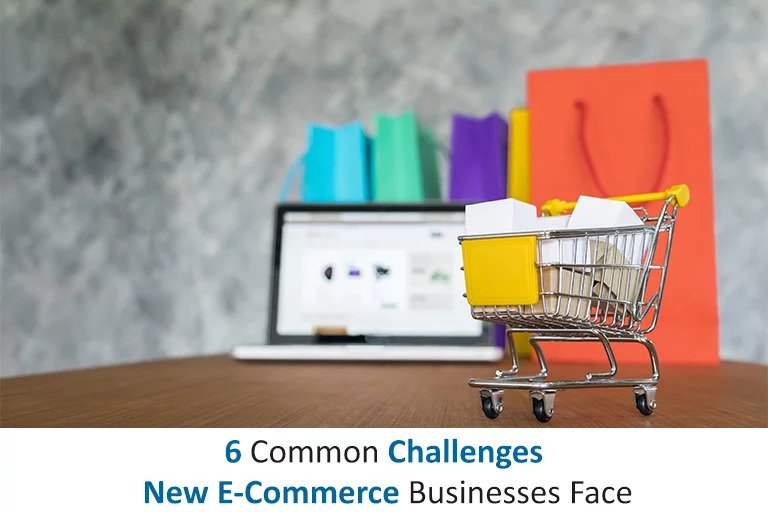Over the last few years, e-commerce has expanded at an unprecedented rate. Businesses have seen the promise of e-commerce since the epidemic began. While the potential appears unrivaled, it is not all sunshine and flowers. In a fast-changing changing environment, e-commerce businesses encounter several problems. If you run an e-commerce business, you must also consider similar threats.
What effect does e-commerce have on a business?
E-commerce allows businesses to reach out to new clients and grow their revenues. However, along with such opportunities come risks. As a business competes against additional competitors, it may need help to sustain revenues. E-commerce businesses broaden the marketplace to include national and international marketplaces. It lowers the cost of producing, processing, disseminating, and retrieving paper-based data. E-commerce is essential since it cuts transaction costs.
The significant influence of e-commerce on the economy, in general, will be on productivity and inflation. Increased competition, cost reductions, and changes in seller pricing behavior may all contribute to the sustained spread of e-commerce, putting downward pressure on inflation.
6 Common Challenges E-commerce Businesses Face
When it comes to e-commerce, there are various obstacles that they confront. Let’s go through the 6 common challenges E-Commerce businesses experience.
- Finding The Right Niche
An ecommerce specialty informs potential clients about what your company has to offer. Customers are most likely searching online for a product like yours that caters to their specific demands. Instead of attempting to serve a broad audience, sell the go-to product that a specialized audience needs. Finding the correct niche is the most challenging and typical difficulty for new e-commerce enterprises. An ecommerce niche is a separate part of any given industry that other enterprises frequently disregard.
Understanding niche is essential since it allows company owners to discover the demands of their potential customers and produce new product ideas based on their wants and specifications. E-commerce niche also aids in determining the best strategy to communicate with the target audience to enhance engagement.
- Finding the right Products
To keep your customers loyal to your business, you must provide high-quality items. Make sure you source your goods from reputable vendors. In e-commerce businesses, you want items with characteristics that buyers view as valuable advantages. You will enhance your sales and earnings by emphasizing advantages in your marketing and sales activities. It’s significant to remember that people buy products and services to solve a problem or satisfy a demand.
Product price is significant; you want it to be reasonable, causing buyers to mistrust its quality or too costly, causing them to be unable to purchase it. Certain items are essential as a magnet to draw customers into the business.
- Sourcing the Products
Product sourcing in E-Commerce businesses entails locating a few reliable vendors from whom you may purchase high-quality items to offer to your customers. It would help if you also generated a reasonable profit on these items to increase your company’s profitability and foster development. The purpose of sourcing is to gather pertinent information on qualified applicants, such as names, titles, and job duties.
Product sourcing entails locating a few reliable vendors in the market from whom you may purchase high-quality items to offer your customers. It is the procedure by which a company acquires shares to sell.
- Targeting A Relevant Audience
Finding an appropriate audience for your new e-commerce store might take time and effort. People used to make spontaneous purchases and buy stuff on the spur of the moment. Back then, e-commerce businesses spent a lot of money on paid marketing efforts and relied mainly on social media for conversions. But a lot has changed since then. Before purchasing, most customers now conduct internet research and read product reviews.
As a result, it is becoming increasingly more work for new e-commerce businesses to target a suitable audience. They weigh several possibilities and select the one that best meets their requirements. E-commerce businesses that have been in the sector for a while have become familiar with precision targeting strategies via trial and error.
- Increasing Store Visits
Several factors make it difficult for new e-commerce enterprises to generate shop visitors. For starters, individuals typically prefer to avoid new e-commerce businesses. They’d instead buy from known companies since there’s less risk involved. The budget is the second most vital limitation to discuss. An e-commerce shop might raise traffic naturally or through sponsored marketing.
- Cart Abandonment
Shopping cart abandonment occurs when a potential consumer begins the checkout process for an online buy but abandons it before completing the purchase. Any item that is added to the shopping cart but never completed is “abandoned” by the customer. When a consumer adds a product to an e-commerce site’s online shopping cart but does not proceed to checkout and finish the transaction. Users may depart because they have yet to be ready to purchase.

